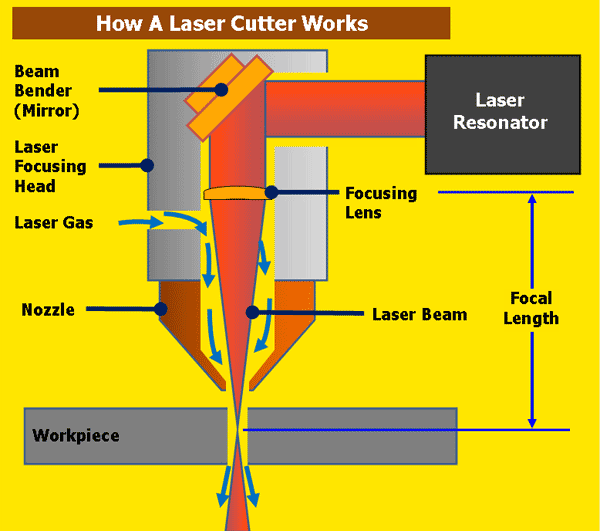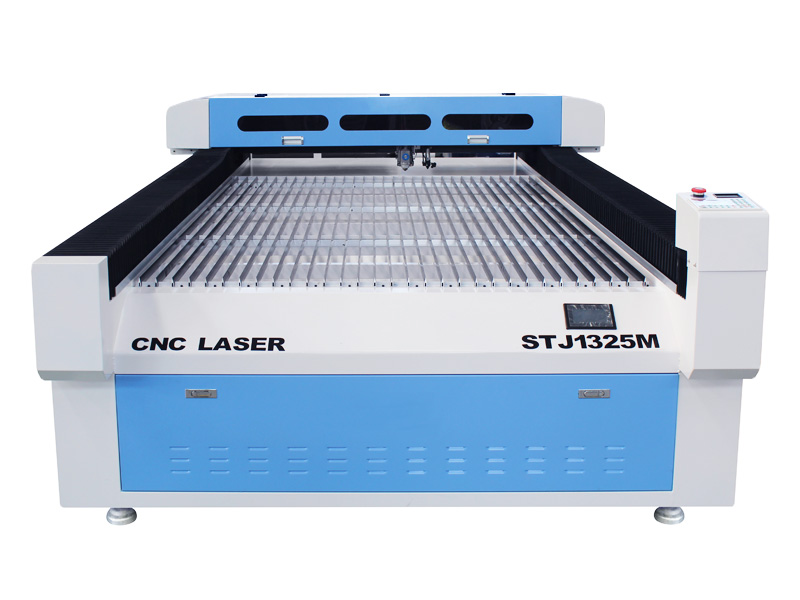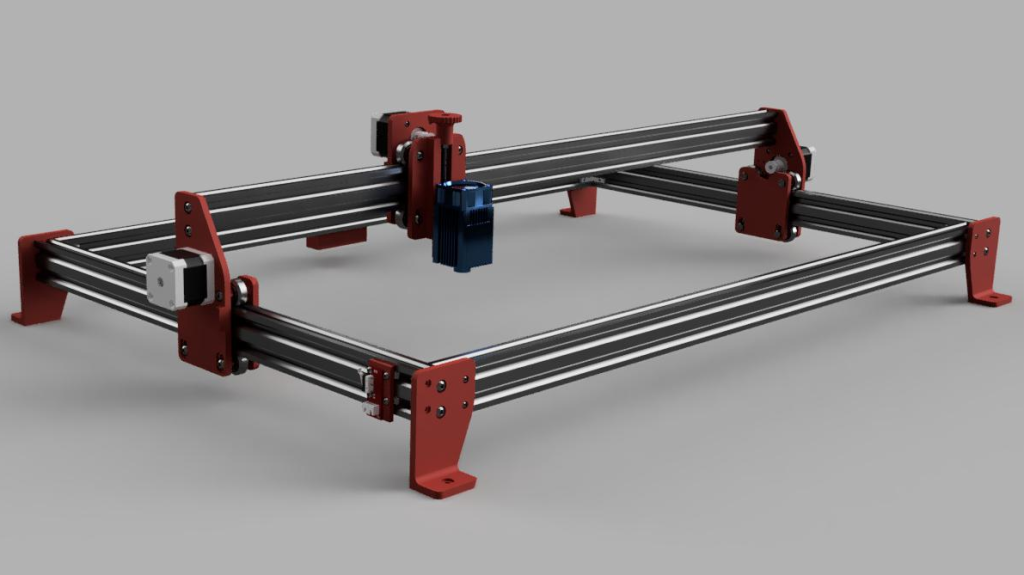Table of Contents
CNC laser cutters are some of the most precise and versatile cutting machines in the industry. They can cut through a wide range of materials with incredible accuracy and speed, making them an essential tool for many businesses and industries. However, one question that often arises is, how thick can a CNC laser cutter cut?
The answer to this question is not straightforward, as it depends on a variety of factors, including the power of the laser, the type of material being cut, and the desired precision of the cut. In this article, we will explore these factors in more detail and provide you with a better understanding of how thick a CNC laser cutter can cut. So, let’s dive in and discover the capabilities of these amazing machines!
The thickness that a CNC laser cutter can cut depends on several factors, including the power of the laser and the type of material being cut. Generally, a CO2 laser cutter can cut up to 1 inch thick material, while a fiber laser cutter can cut up to 1/2 inch thick material. However, these values can vary depending on the specific machine and materials used. It’s always best to consult the manufacturer’s specifications for the machine’s capabilities.
How Thick Can a CNC Laser Cutter Cut?
CNC laser cutters have revolutionized the manufacturing industry by enabling precise and accurate cuts on various materials such as metal, wood, acrylic, and more. One of the most common questions asked by those who use CNC laser cutters is, “how thick can a CNC laser cutter cut?” In this article, we will explore the various factors that determine the thickness of materials that can be cut using a CNC laser cutter.
1. Laser Power
The power of the laser is one of the most critical factors that determine the thickness of materials that can be cut using a CNC laser cutter. The laser’s power determines how much energy the laser can deliver to the material being cut. The higher the laser power, the thicker the material that can be cut. For example, a laser with a power of 150 watts can cut materials up to 1 inch thick, while a laser with a power of 500 watts can cut materials up to 6 inches thick.
Another crucial factor is the type of laser used. CO2 lasers are the most common type of laser used for cutting materials. They are efficient and can cut through a wide range of materials. Fiber lasers, on the other hand, are relatively new in the market and are ideal for cutting metal materials.
2. Material Type
The type of material being cut also plays a significant role in determining the thickness of the material that can be cut. Different materials have different properties, such as density, melting point, and thermal conductivity, which affect how the laser interacts with the material. For instance, metals are denser than plastics and require more laser power to cut through them.
The thickness of the material being cut also affects the quality of the cut. Thicker materials require more time and energy to cut, which can lead to a more significant heat-affected zone and a less precise cut. Therefore, it is essential to consider the thickness of the material when selecting a CNC laser cutter.
3. Cutting Speed
The cutting speed of the CNC laser cutter is another crucial factor that determines the thickness of the material that can be cut. The speed at which the laser moves across the material affects the amount of heat generated and the precision of the cut. Faster cutting speeds can result in a less precise cut, while slower speeds can cause excessive heat buildup and melting.
It is essential to strike a balance between cutting speed and precision to achieve the desired results. The cutting speed also affects the production rate, with faster speeds resulting in higher production rates.
4. Lens Quality
The lens quality of the CNC laser cutter also affects the thickness of the material that can be cut. The lens focuses the laser beam onto the material, and a high-quality lens can deliver a more precise and focused beam, resulting in cleaner cuts.
A lens with a lower quality can scatter the laser beam, causing a less precise cut and a more significant heat-affected zone. Therefore, it is essential to ensure that the CNC laser cutter comes with a high-quality lens when selecting one for cutting thicker materials.
5. Gas Type and Pressure
Gas is used to assist with the cutting process by blowing away debris and preventing the material from melting. The type of gas used and the pressure applied can affect the thickness of the material that can be cut.
For example, oxygen is commonly used when cutting metals as it reacts with the material, resulting in a clean cut. However, too much oxygen can cause burning and warping of the material. Nitrogen can also be used when cutting metals, and it provides a cleaner cut without causing burning or warping.
6. Maintenance and Calibration
The maintenance and calibration of the CNC laser cutter are critical to ensure that it operates at its optimum level. Regular maintenance and calibration can help prevent issues that can affect the CNC laser cutter’s performance, resulting in less precise cuts and reduced thickness capacity.
7. Benefits of CNC Laser Cutters
CNC laser cutters offer several benefits over traditional cutting methods. They provide more precise and accurate cuts, resulting in less material waste and higher production rates. CNC laser cutters can also cut through a wide range of materials, making them versatile and ideal for various industries.
8. CNC Laser Cutters vs. Traditional Cutting Methods
CNC laser cutters offer several advantages over traditional cutting methods such as sawing, drilling, and milling. They provide more precise and accurate cuts, resulting in less material waste and higher production rates. CNC laser cutters can also cut through a wide range of materials, making them versatile and ideal for various industries.
Traditional cutting methods can be time-consuming and require more labor, resulting in higher production costs. They are also limited in the types of materials they can cut and the thickness of the materials.
9. Conclusion
In conclusion, the thickness of the material that can be cut using a CNC laser cutter depends on several factors, including the laser power, material type, cutting speed, lens quality, gas type and pressure, and maintenance and calibration. It is essential to consider these factors when selecting a CNC laser cutter for cutting thicker materials.
CNC laser cutters offer several benefits over traditional cutting methods, such as more precise and accurate cuts, higher production rates, and versatility. Therefore, they are an ideal investment for various industries looking to improve their manufacturing processes.
10. Additional Resources
If you’re interested in learning more about CNC laser cutters and how they work, check out the following resources:
– “The Ultimate Guide to CNC Laser Cutters” by Sculpteo
– “How Does a CNC Laser Cutter Work?” by MachineMfg
– “The Advantages of CNC Laser Cutting” by Metal Cutting Corporation
Frequently Asked Questions
Here are some frequently asked questions about the thickness of materials that can be cut with a CNC laser cutter.
How thick can a CNC laser cutter cut?
A CNC laser cutter can cut through a variety of materials, including metal, wood, plastics, and more. The thickness of the material that can be cut will depend on a few factors, such as the type of laser cutter, the power of the laser, and the type of material being cut.
For example, a CO2 laser cutter can typically cut through materials up to 1 inch thick, while a fiber laser cutter can cut through materials up to 1/2 inch thick. However, it’s important to note that these are general guidelines, and the actual thickness that can be cut may vary depending on the specific machine and material being used.
What factors affect the thickness of materials that can be cut?
Several factors can affect the thickness of materials that can be cut with a CNC laser cutter. One of the most important factors is the power of the laser. Generally, higher-powered lasers can cut through thicker materials than lower-powered lasers.
The type of laser cutter being used can also affect the thickness of materials that can be cut. For example, a CO2 laser cutter is typically better suited for cutting thicker materials, while a fiber laser cutter is better suited for cutting thinner materials.
What materials can be cut with a CNC laser cutter?
A CNC laser cutter can cut through a variety of materials, including metal, wood, plastics, acrylic, leather, and more. The type of material being cut will affect the thickness that can be cut, as well as the type of laser cutter that is best suited for the job.
It’s important to note that some materials, such as PVC and vinyl, should not be cut with a laser cutter due to the potentially harmful fumes that can be released. Always check the manufacturer’s guidelines and safety recommendations before cutting any material with a CNC laser cutter.
What are the advantages of using a CNC laser cutter?
One of the main advantages of using a CNC laser cutter is the precision and accuracy that can be achieved. Laser cutting allows for intricate designs and shapes to be cut with ease, and the high level of control over the cutting process ensures consistent results.
Additionally, CNC laser cutting is a fast and efficient process, allowing for a high volume of materials to be cut quickly and accurately. This can save time and labor costs compared to traditional cutting methods.
What are some common applications for CNC laser cutting?
CNC laser cutting is used in a variety of industries and applications, including manufacturing, prototyping, signage, jewelry making, and more. Some common uses for CNC laser cutting include cutting metal parts for machinery, creating custom acrylic signs, and cutting intricate designs into wood or leather for crafts and decorations.
The versatility and precision of CNC laser cutting make it a popular choice for a wide range of applications, and the technology continues to advance, allowing for even more possibilities in the future.
In conclusion, the thickness of material that a CNC laser cutter can cut largely depends on the power of the laser and the type of material being cut. The higher the laser power, the thicker the material that can be cut. However, it is important to note that even with a high-powered laser, certain materials such as metals may require multiple passes to achieve a clean cut.
It is also important to consider the quality of the laser cutter and the precision of its cutting mechanism. A well-maintained and calibrated CNC laser cutter will be able to cut thicker materials with greater accuracy and consistency.
Ultimately, the thickness of material that can be cut with a CNC laser cutter should be determined by conducting tests on the specific machine and material being used. By understanding the capabilities of the CNC laser cutter and properly setting up the machine, manufacturers and hobbyists alike can achieve impressive results with a variety of materials.
Request a quote today!
[contact-form-7 id="1578" title="Contact form"]
Please compress the file into a ZIP or RAR file before uploading. Alternatively, send through your RFQ by email.
enquires@unitymanufacture.com





